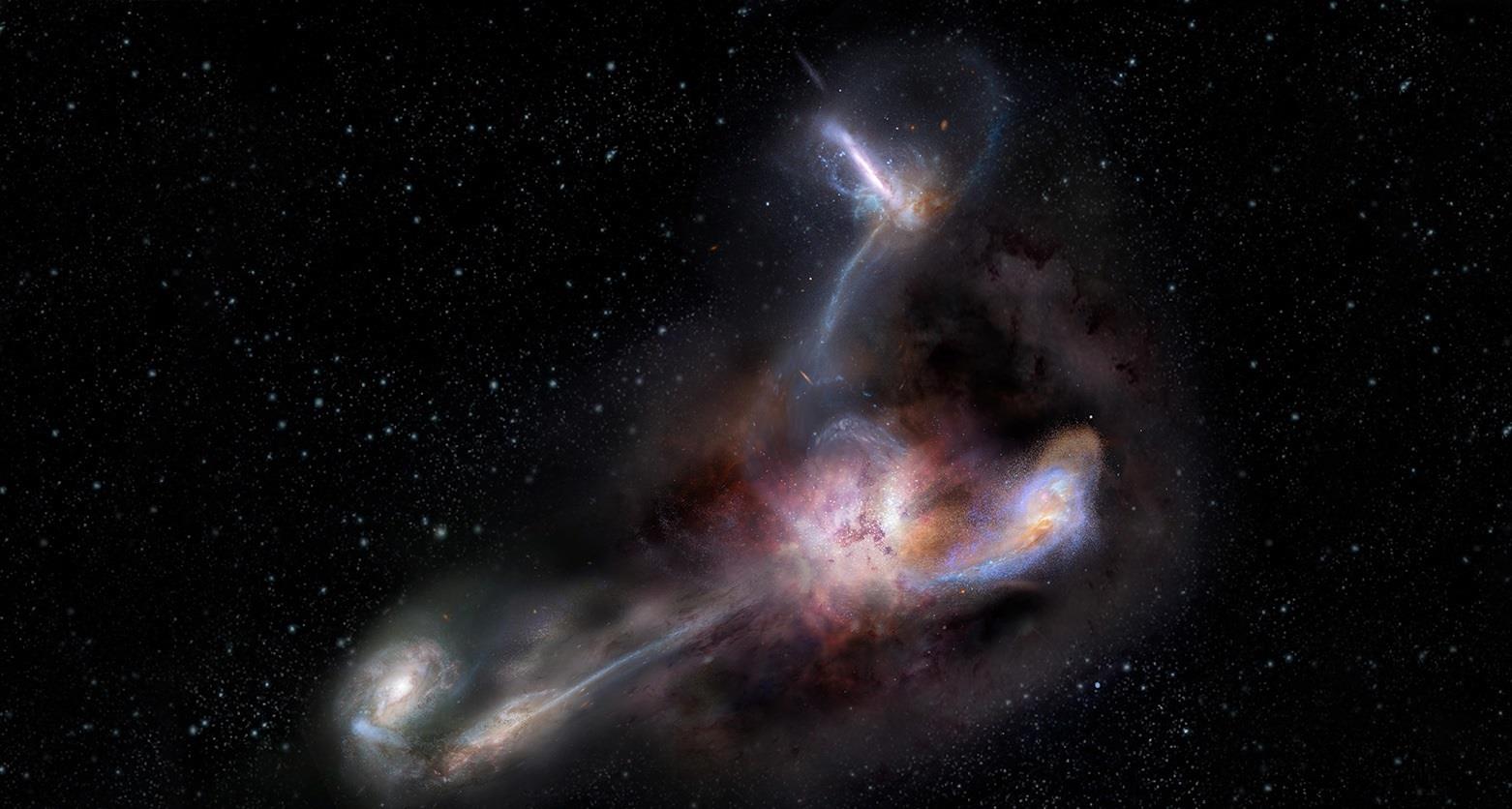WASHINGTON, Nov. 15 (Xinhua) -- A study published on Thursday in the journal Science has revealed that the brightest galaxy ever discovered is devouring at least three of its smaller neighbors.
The material that the galaxy is stealing from its neighbors is likely contributing to its super-brightness, according to co-authors of the paper from NASA's Jet Propulsion Laboratory.
The galaxy discovered by NASA's space-based telescope WISE in 2015 is by no means the largest or most massive galaxy we know of, but it radiates at 350 trillion times the luminosity of the Sun.
Most of its luminosity comes not only from stars, but also a collection of hot gas and dust concentrated around the center of the galaxy.
Now, new observations by ALMA, a telescope built in Chile, showed distinct trails of dust being pulled from three smaller galaxies.
The trails contain about as much material as the smaller galaxies themselves, and it's unclear whether those galaxies will escape their current fate or will be completely consumed by their luminous neighbor, according to the study.
At the heart of the brightest galaxy' s dust is a supermassive black hole, believed to be 4 billion times more massive than the Sun.
With intense gravity, matter falls toward the black hole at high speeds, crashing together and heating up to millions of degrees, causing the material to shine with incredible brilliance, according to the study.
Galaxies that contain these types of luminous, black-hole-fueled structures are known as quasars.
Like any engine on Earth, its enormous energy output requires an equally high fuel input, and they come from the gas and dust to form stars and to replenish the cloud around the central black hole.
The galaxy is the most distant galaxy ever found to be accreting material from multiple sources. The light from it took 12.4 billion years to reach us, so astronomers are seeing the object as it was when our universe was only a tenth of its present age of 13.8 billion years.
